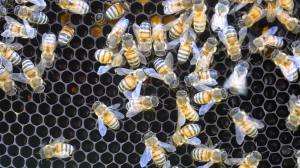In a recent episode of Veritasium, host Derek Muller offers a detailed explanation as to how and why chameleons change their appearance, and how new scientific research has proven original theories wrong. Rather than their skin changing color through colored pigments traveling through their cells, chameleons actually change their appearance through reflective structural coloration, in a way much like the Morpho butterfly.
..new research from a collaborating group of physicists and biologists at the University of Geneva shows that this is incorrect. Now the first clue should come from the fact that there is actually no green pigment in a chameleon, the green color is actually created by two distinct mechanisms; pigment color and structural color. Beneath the yellow pigment cells are cells containing tiny 130-nanometer crystals irrregularly arranged in a lattice. Now light refracts off of these crystals and due to the spacing between them, blue light constructively interferes and is therefore strongly reflected, whereas the other colors are not reflected. This is very similar to how a Morpho butterfly wing creates an iridescent blue but there’s no blue pigment, just the periodic nanoscale structure that acts as a strong reflector for only one color.
New Scientist has also posted slightly sped-up footage that shows a male chameleon changing his color.






